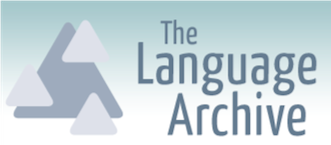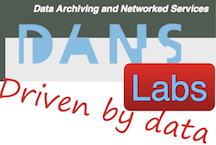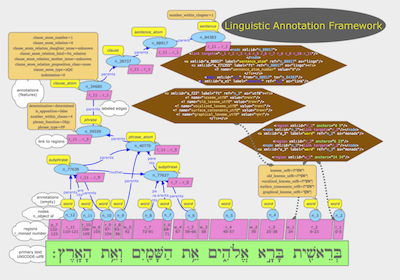Welcome¶



Caution
LAF-Fabric has a successor: Text-Fabric. LAF-Fabric stays around in order to run legacy notebooks. It is recommended to use Text-Fabric for new work.
The word fabric denotes a texture, and a LAF resource can be seen as a texture of annotations to a primary data source.
In other languages than English, and possibly in English as well, fabric also denotes a place were stuff is made. For etymology, see faber. The location of industry, a factory (but that word derives from the slightly different facere).
What if you want to study the data that is in the fabric of a LAF resource? You need tools. And what if you want to add your own tapestry to the fabric?
You need an interactive environment where tools can be developed and data can be combined.
This is the LAF Fabric, and here is a simple example of what you can do with it:
Author¶
LAF-Fabric has been developed by Dirk Roorda, working at DANS and TLA. The need for it arose while executing a CLARIN-NL project SHEBANQ, by which the contents of the Hebrew Text Database of the ETCBC was converted from EMDROS (that conversion is also part of LAF-Fabric). into LAF.
Who is using LAF-Fabric?¶

People at the Theology Department of the VU University Amsterdam are producing notebooks for their research into the text of the Hebrew Bible, see
- The ETCBC’s github repository (highlight: trees for Data Oriented Parsing)
- Gino Kalkman’s analysis of the verbal forms in the Psalms, accompanying his Ph.D. thesis
- other contributions
LAF-Fabric has been used in several ways to construct the SHEBANQ demonstrator query saver.
The development of LAF-Fabric continues, but its progress now takes place mostly inside the module etcbc, a specialized module to support working with the Hebrew Text Database of the ETCBC.